The figures should make us sit up. One in five Irish people increased the amount or the frequency of alcohol consumption since the pandemic began.
For three years in a row, half the adult population are saying that they drink on at least a weekly basis now.
Throw in a one in four engaging in binge drinking figure and red flags appear in relation to alcohol consumption in Ireland.
These are Drinkaware figures from its 2022 annual survey. Surveys each year mean this national charity has a good handle on what’s happening.
Sheena Horgan, CEO of the charity that works to prevent and reduce the misuse of alcohol, has one major message that she wants to get out – know the basic information about what is a safe amount of alcohol to drink each week.
“Only 3% of the population know the lowest weekly guidelines, our research has shown,” she says. “If you don’t know that how do you know if you are drinking at a high- or low-risk level? How do you know when it’s safe to drive the next day if you don’t know how many [standard] drinks you’ve had the night before? You can’t calculate your risk properly if you don’t.”
People need to know the basic information, she insists – 11 standard drinks a week for a female, 17 for a male and what a standard drink is.
“One standard drink is 100ml of wine, for example. A lot of people would assume it is 150ml or 200ml so they could be having two large glasses of wine and thinking they’ve only had two drinks when they have actually had four. A great place to start understanding your drinking habits is understanding what a standard drink is.”
Coping mechanism during pandemic
Twenty-five per cent of people surveyed during lockdowns said they were drinking more alcohol but what reasons did they proffer for doing this?
“Most people surveyed stated that the extra alcohol consumption was to help them cope,” she says. “They said it helped them deal with the stress, the uncertainty, the isolation and the loneliness of those COVID-19 years. While the figures are going down a bit now, thankfully, the level of drinking post-pandemic is a concern.”
The pandemic can’t be blamed on all the increase in drinking at home, however. Drinkaware statistics from 2019, pre-COVID-19, showed that a lot of drinking at home was already going on in Ireland.
“In 2019 we found that 62% of drinking occasions were happening in the home, so that’s nearly two-thirds of people who were drinking were doing it in the home setting.”
Ploughing experience
The Ploughing was a great example of meaningful interaction with the rural public about alcohol consumption, the CEO says.
“We gave away 12,000 resources, information leaflets, cups and calculators and we had 12,000 conversations around that over the three days.
“Some people were cautious or wary and said things like, ‘I probably should cut down or cut alcohol out for a while’. A lot of people took the free measuring cups, for themselves or others whose drinking they were concerned about. They are simple things but they really work.”
“How soon can I drive next day?” was the big question at the Ploughing, Horgan says.
It wasn’t the easiest to answer, however, because of all the variables.
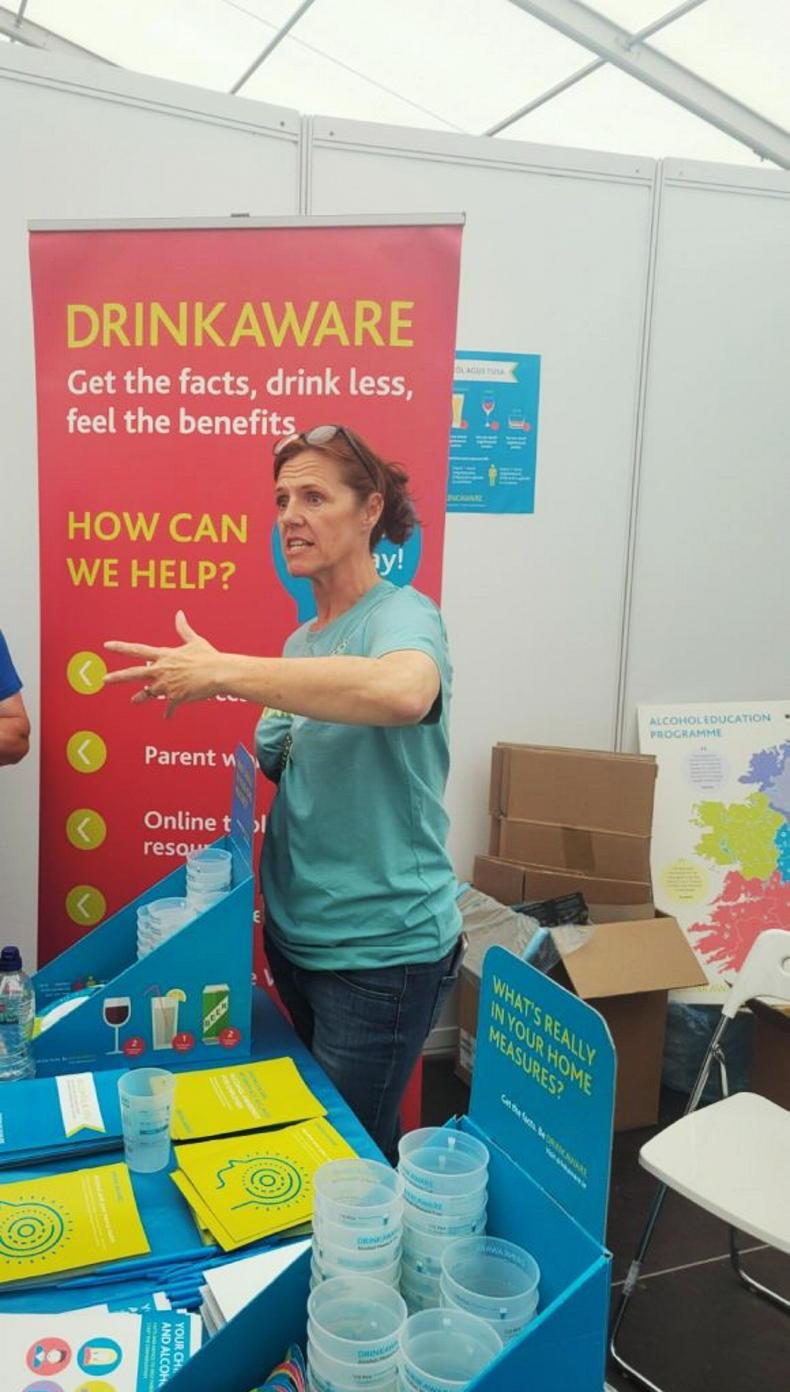
Drinkaware CEO Sheena Horgan pictured at the National Ploughing championships
“The time of your last drink at night will affect when it is safe for you to drive the following day,” she says. “This means that there could still be alcohol in your system the morning after drinking. It takes at least one hour to process one standard drink but this is a guide for information purposes only. Other factors will affect this time including age, gender, weight, alcohol strength, the speed of your metabolism and the number of drinks consumed. There is nothing you can do to remove alcohol from your body any quicker, only time.”
Optimistic
The good news is that Irish people are engaging with the issue, Sheena states. “While we do still have an issue in regards to alcohol in Ireland, attitudes are changing for the better and it’s beholding on all of us to make a positive contribution to that change and really try and support it if only through the collective effort of communities, government policies, industry and families. It’s about everyone making an effort and that’s where we’ll hopefully see a more significant shift as the years go on.”
Myths about sobering up
Common myths are that drinking coffee, having a shower, eating a large breakfast or going for a run will sober you up. However, these are simply not true. After you stop drinking, the alcohol levels in your system can continue to rise for up to three hours.
If, next day, you feel unsure that you are able to drive safely, wait or use alternative transport options.
It comes back to knowing what a standard drink is.
“If you don’t know what a standard drink is you may think you can drive sooner than you can,” the CEO says.
Sobering statistics
Drinkaware highlights some sobering
statistics. Although almost half of all arrests for driving under the influence of an intoxicant (DUI) take place between midnight and 6am, one in 10 DUI arrests are made between 8am and 2pm. There is a peak of this on Sundays.
There are huge benefits to cutting alcohol out or down, Sheena says. First she lists the ‘soft’ benefits:
Better sleep and more energy
Yes, a glass of wine in the evening might help put you to sleep but the kind of sleep you get will be a different and less restorative sleep than if you haven’t had any alcohol. A lot of people complained during the pandemic of having difficulty sleeping.
The consumption of alcohol will aggravate that, if not cause it, so if you cut back or cut alcohol out altogether you will have more energy next day and better concentration, memory and productivity.
More money in your pocket
Often people don’t consider how much money they are spending on alcohol. See Drinkaware.ie’s handy online drinks calculator.
Improved mental health
Alcohol is a depressant that disrupts how the brain functions, affecting thoughts, feelings and actions, so cutting it out or down will help your mood improve.
Mental health and wellbeing has been affected by the pandemic, with Drinkaware seeing a 35% increase in visits to the section of its website that addresses alcohol’s impact on mental health.
Better long-term physical health
Alcohol weakens your immune system, so if you cut it out/down you will be better able to resist or fight off colds. You’ll also experience lower blood sugar, weight loss and avoid things like headache and heartburn and liver function problems down the line.
Healthier appearance
Cutting back on alcohol can help you lose or maintain your weight as alcohol contains a lot of sugar. Your skin will look better too as alcohol won’t be drying it out or triggering rosacea.
Longer term major benefits:
The longer term benefits are: Avoiding serious illness like cancers, liver and heart disease.
Curtailing consumption at home
So, what can help a person curtail their consumption at home or when entertaining?
Sheena Horgan has these tips:
Use smaller glasses.Have a standard drinks measure to hand. You can get a free measuring cup and information pack on drinkaware.ieDon’t top up your own or your guests’ drinks. By doing this you make it easier for yourself and/or your guests to make good decisions about whether or not they will have more. Stock up on “no or low” alcohol alternatives. If it is not in the fridge, you can’t drink it! Curtailing your own consumption when out
When out:
Finish one drink before you order another.Alternate alcoholic drinks with “no or low” options like water or spritzers.Stay out of rounds to avoid getting caught up in someone else’s drinking pace.Be mindful of how much you are drinking and of the weekly guidelines. Rural statistics
When compared with the equivalent responses from urban interviewees in Drinkaware surveys, it appears that rural counterparts have “healthier” attitudes towards alcohol, Sheena Horgan states.
13% of rural people don’t drink at all (compared to 10% of urban people).18% of rural drinkers binge drink ie have 6+ drinks in a single sitting. 24% of rural drinkers cited, “Because it makes social gatherings more fun” and “Because it’s fun” as a motivation for drinking.
86% of rural respondents agreed, “Any amount of alcohol impairs your ability to drive.”30% of rural interviewees agreed with the statement, “I am more likely to drink at home in the past 12 months”.Useful calculator
Check out the useful calculator on drinkaware.ie’s homepage to find out how long it will take to process what you’ve drunk, the financial cost and the sugar content of what you’ve consumed.
The figures should make us sit up. One in five Irish people increased the amount or the frequency of alcohol consumption since the pandemic began.
For three years in a row, half the adult population are saying that they drink on at least a weekly basis now.
Throw in a one in four engaging in binge drinking figure and red flags appear in relation to alcohol consumption in Ireland.
These are Drinkaware figures from its 2022 annual survey. Surveys each year mean this national charity has a good handle on what’s happening.
Sheena Horgan, CEO of the charity that works to prevent and reduce the misuse of alcohol, has one major message that she wants to get out – know the basic information about what is a safe amount of alcohol to drink each week.
“Only 3% of the population know the lowest weekly guidelines, our research has shown,” she says. “If you don’t know that how do you know if you are drinking at a high- or low-risk level? How do you know when it’s safe to drive the next day if you don’t know how many [standard] drinks you’ve had the night before? You can’t calculate your risk properly if you don’t.”
People need to know the basic information, she insists – 11 standard drinks a week for a female, 17 for a male and what a standard drink is.
“One standard drink is 100ml of wine, for example. A lot of people would assume it is 150ml or 200ml so they could be having two large glasses of wine and thinking they’ve only had two drinks when they have actually had four. A great place to start understanding your drinking habits is understanding what a standard drink is.”
Coping mechanism during pandemic
Twenty-five per cent of people surveyed during lockdowns said they were drinking more alcohol but what reasons did they proffer for doing this?
“Most people surveyed stated that the extra alcohol consumption was to help them cope,” she says. “They said it helped them deal with the stress, the uncertainty, the isolation and the loneliness of those COVID-19 years. While the figures are going down a bit now, thankfully, the level of drinking post-pandemic is a concern.”
The pandemic can’t be blamed on all the increase in drinking at home, however. Drinkaware statistics from 2019, pre-COVID-19, showed that a lot of drinking at home was already going on in Ireland.
“In 2019 we found that 62% of drinking occasions were happening in the home, so that’s nearly two-thirds of people who were drinking were doing it in the home setting.”
Ploughing experience
The Ploughing was a great example of meaningful interaction with the rural public about alcohol consumption, the CEO says.
“We gave away 12,000 resources, information leaflets, cups and calculators and we had 12,000 conversations around that over the three days.
“Some people were cautious or wary and said things like, ‘I probably should cut down or cut alcohol out for a while’. A lot of people took the free measuring cups, for themselves or others whose drinking they were concerned about. They are simple things but they really work.”
“How soon can I drive next day?” was the big question at the Ploughing, Horgan says.
It wasn’t the easiest to answer, however, because of all the variables.

Drinkaware CEO Sheena Horgan pictured at the National Ploughing championships
“The time of your last drink at night will affect when it is safe for you to drive the following day,” she says. “This means that there could still be alcohol in your system the morning after drinking. It takes at least one hour to process one standard drink but this is a guide for information purposes only. Other factors will affect this time including age, gender, weight, alcohol strength, the speed of your metabolism and the number of drinks consumed. There is nothing you can do to remove alcohol from your body any quicker, only time.”
Optimistic
The good news is that Irish people are engaging with the issue, Sheena states. “While we do still have an issue in regards to alcohol in Ireland, attitudes are changing for the better and it’s beholding on all of us to make a positive contribution to that change and really try and support it if only through the collective effort of communities, government policies, industry and families. It’s about everyone making an effort and that’s where we’ll hopefully see a more significant shift as the years go on.”
Myths about sobering up
Common myths are that drinking coffee, having a shower, eating a large breakfast or going for a run will sober you up. However, these are simply not true. After you stop drinking, the alcohol levels in your system can continue to rise for up to three hours.
If, next day, you feel unsure that you are able to drive safely, wait or use alternative transport options.
It comes back to knowing what a standard drink is.
“If you don’t know what a standard drink is you may think you can drive sooner than you can,” the CEO says.
Sobering statistics
Drinkaware highlights some sobering
statistics. Although almost half of all arrests for driving under the influence of an intoxicant (DUI) take place between midnight and 6am, one in 10 DUI arrests are made between 8am and 2pm. There is a peak of this on Sundays.
There are huge benefits to cutting alcohol out or down, Sheena says. First she lists the ‘soft’ benefits:
Better sleep and more energy
Yes, a glass of wine in the evening might help put you to sleep but the kind of sleep you get will be a different and less restorative sleep than if you haven’t had any alcohol. A lot of people complained during the pandemic of having difficulty sleeping.
The consumption of alcohol will aggravate that, if not cause it, so if you cut back or cut alcohol out altogether you will have more energy next day and better concentration, memory and productivity.
More money in your pocket
Often people don’t consider how much money they are spending on alcohol. See Drinkaware.ie’s handy online drinks calculator.
Improved mental health
Alcohol is a depressant that disrupts how the brain functions, affecting thoughts, feelings and actions, so cutting it out or down will help your mood improve.
Mental health and wellbeing has been affected by the pandemic, with Drinkaware seeing a 35% increase in visits to the section of its website that addresses alcohol’s impact on mental health.
Better long-term physical health
Alcohol weakens your immune system, so if you cut it out/down you will be better able to resist or fight off colds. You’ll also experience lower blood sugar, weight loss and avoid things like headache and heartburn and liver function problems down the line.
Healthier appearance
Cutting back on alcohol can help you lose or maintain your weight as alcohol contains a lot of sugar. Your skin will look better too as alcohol won’t be drying it out or triggering rosacea.
Longer term major benefits:
The longer term benefits are: Avoiding serious illness like cancers, liver and heart disease.
Curtailing consumption at home
So, what can help a person curtail their consumption at home or when entertaining?
Sheena Horgan has these tips:
Use smaller glasses.Have a standard drinks measure to hand. You can get a free measuring cup and information pack on drinkaware.ieDon’t top up your own or your guests’ drinks. By doing this you make it easier for yourself and/or your guests to make good decisions about whether or not they will have more. Stock up on “no or low” alcohol alternatives. If it is not in the fridge, you can’t drink it! Curtailing your own consumption when out
When out:
Finish one drink before you order another.Alternate alcoholic drinks with “no or low” options like water or spritzers.Stay out of rounds to avoid getting caught up in someone else’s drinking pace.Be mindful of how much you are drinking and of the weekly guidelines. Rural statistics
When compared with the equivalent responses from urban interviewees in Drinkaware surveys, it appears that rural counterparts have “healthier” attitudes towards alcohol, Sheena Horgan states.
13% of rural people don’t drink at all (compared to 10% of urban people).18% of rural drinkers binge drink ie have 6+ drinks in a single sitting. 24% of rural drinkers cited, “Because it makes social gatherings more fun” and “Because it’s fun” as a motivation for drinking.
86% of rural respondents agreed, “Any amount of alcohol impairs your ability to drive.”30% of rural interviewees agreed with the statement, “I am more likely to drink at home in the past 12 months”.Useful calculator
Check out the useful calculator on drinkaware.ie’s homepage to find out how long it will take to process what you’ve drunk, the financial cost and the sugar content of what you’ve consumed.





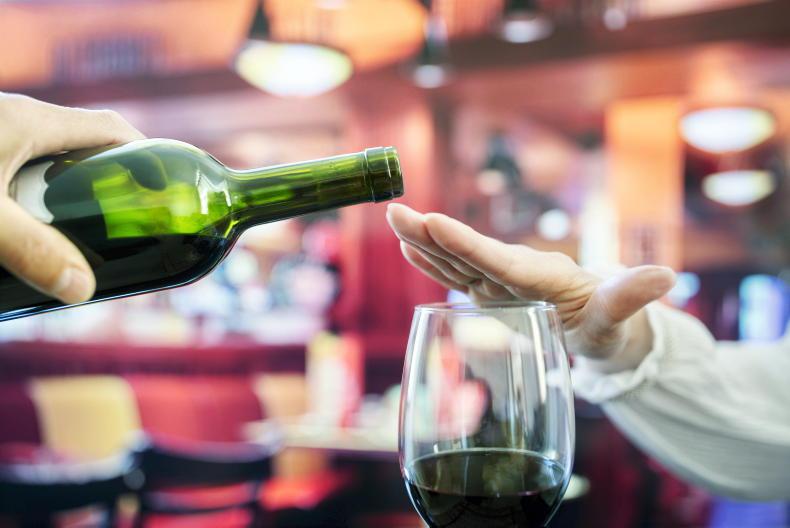
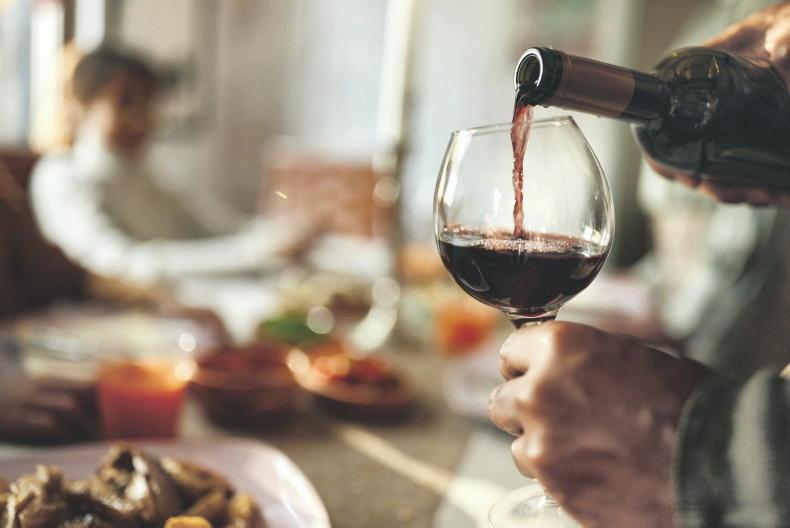
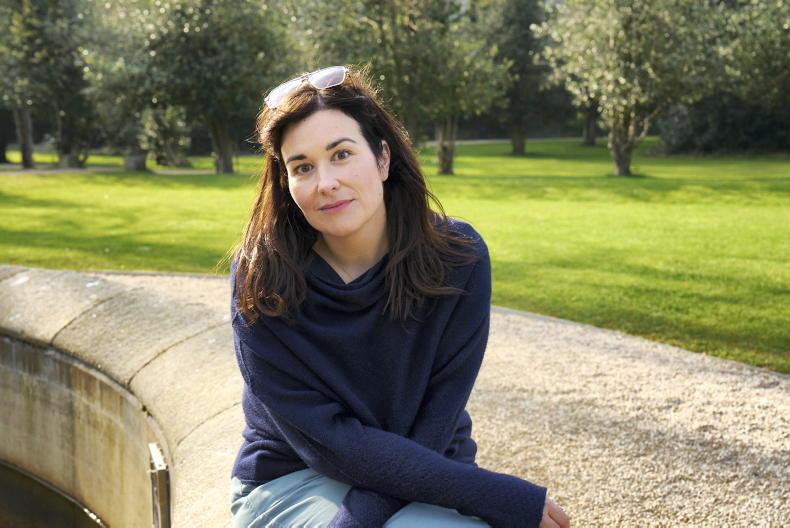
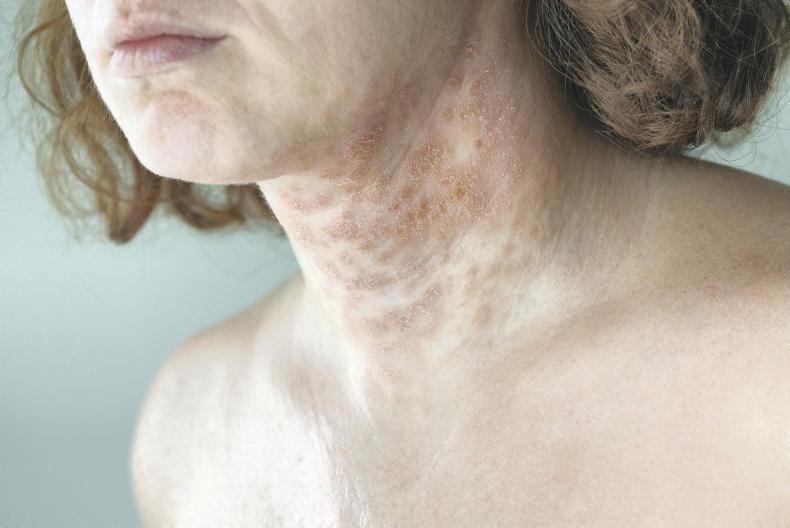

SHARING OPTIONS